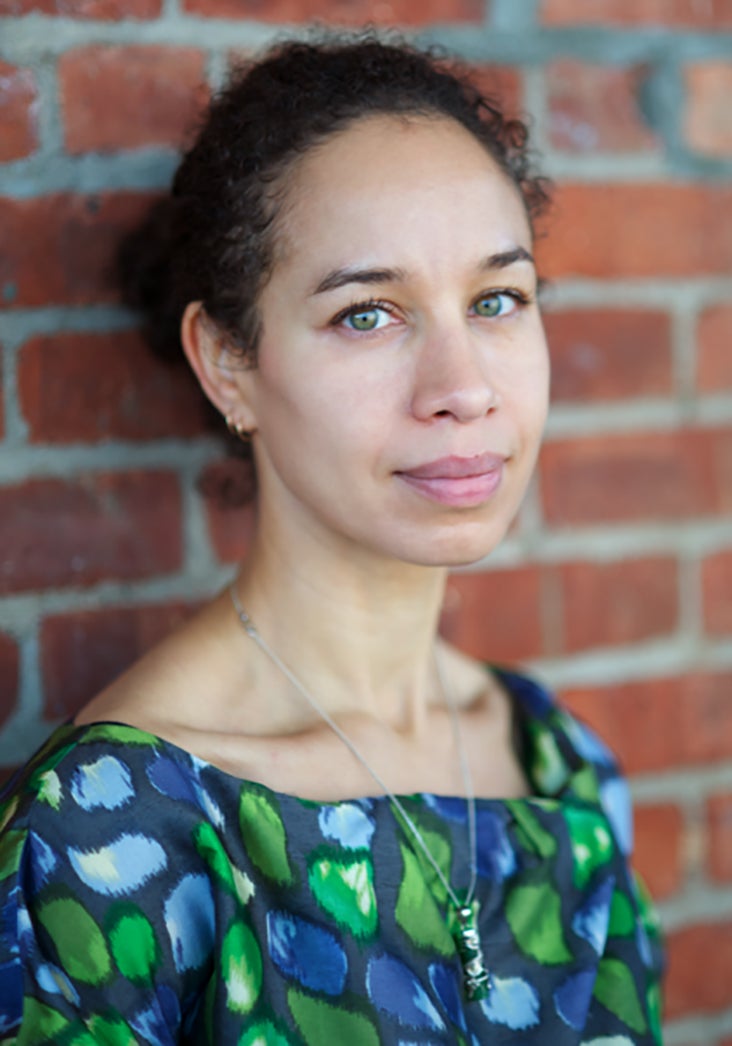
Louise Bernard is no stranger to delving into the intricacies of Black life to craft a compelling narrative.
She’s been called a luminary in the African-American museum world by The Chicago Tribune, and has imbued spaces with subtle yet captivating touches to offer some of the most comprehensive accounts of our history from pre–Middle Passage to post–Obama presidency. She masterfully pieces together the different experiences to form a complete, thoroughly satisfying picture.
Bernard has continued this practice throughout her career. She was a member of the group that helped map out the National Museum of African American History and Culture in Washington, D.C. Afterward she became a content developer and adviser to the International African American Museum in Charleston, South Carolina. And right before she got the call to bring former President Barack Obama and First Lady Michelle Obama’s story to life in Chicago, Bernard was slaying it in her dream job as the director of exhibitions at the New York Public Library.
Still the 46-year-old from northern England is earnestly humble about her latest position as the director of the Museum of the Obama Presidential Center. Last October, during a breakout session at the first-ever Obama Foundation Summit, she took nearly a fourth of her allotted time just to highlight and praise key players, including the design team at Ralph Appelbaum Associates, before delving into the plans for the center. Her mellow yet direct delivery commanded the attention of everyone in the room.
Bernard can expertly relay the tale of Barack Obama’s ascendance and his connection to the South Side, and how this new space is to be one of reflection—like most presidential libraries—and one that also celebrates the people of Chicago. Says Bernard: “It’s the place where President Obama really found his footing, his sense of self, his sense of a broader family and community. So I think it’s fair to say Chicago is perhaps one of the very few places, if not the only place, where his story could have happened. And I think that is very much attached to his belief that while his story is—of course—singular and inspiring for many people, he always sees his story as being attached to those on whose shoulders he has stood. On whose shoulders we all stand.”
Bernard and the Obamas’ working together seems like kismet. Her humility and dedication mirror theirs. And she appreciates their faith in her. “[They] were willing to hire someone who had not managed a museum before, and I think that comes out of the Obama way of seeing the world,” she explains, referencing how the couple put enthusiasm, hard work and commitment before tenure and experience.
But Bernard’s extensive educational background no doubt was a major factor. The daughter of a Jamaican father and an English mother, she studied African-American film and theater as a drama major at Britain’s University of Manchester. She later came to the States to obtain a master’s degree in theater history and English at Indiana University Bloomington. At Yale she earned a joint Ph.D. in African-American and American studies. “Yale opened up the world to me,” she says. “The importance of the African diaspora, the incredible richness of the history, of the culture. Of the way in which this particular country has been entirely shaped by Black culture and by the labor of Black people. And we see that globally. It’s a global phenomenon.”
The title of director—the person tasked with recounting the historical significance of the Obama administration and the work of Michelle Obama through permanent exhibits and a platform for civic engagement—is not lost on Bernard. Her moves up the ladder didn’t come without a willingness to step into her power, particularly as a woman of color. “I’ve been open to sometimes making a leap of faith. That’s what I would share with other young women. Especially women of color, who may feel constrained by all the issues of race, racism and caste politics. I’m not oblivious to those pressures,” she says.
Still, she insists that the multimillion-dollar undertaking takes a community, a design and an execution ecosystem. “I like to think of myself as still being very much a part of a team,” she says. “A big team, a big collective endeavor.”